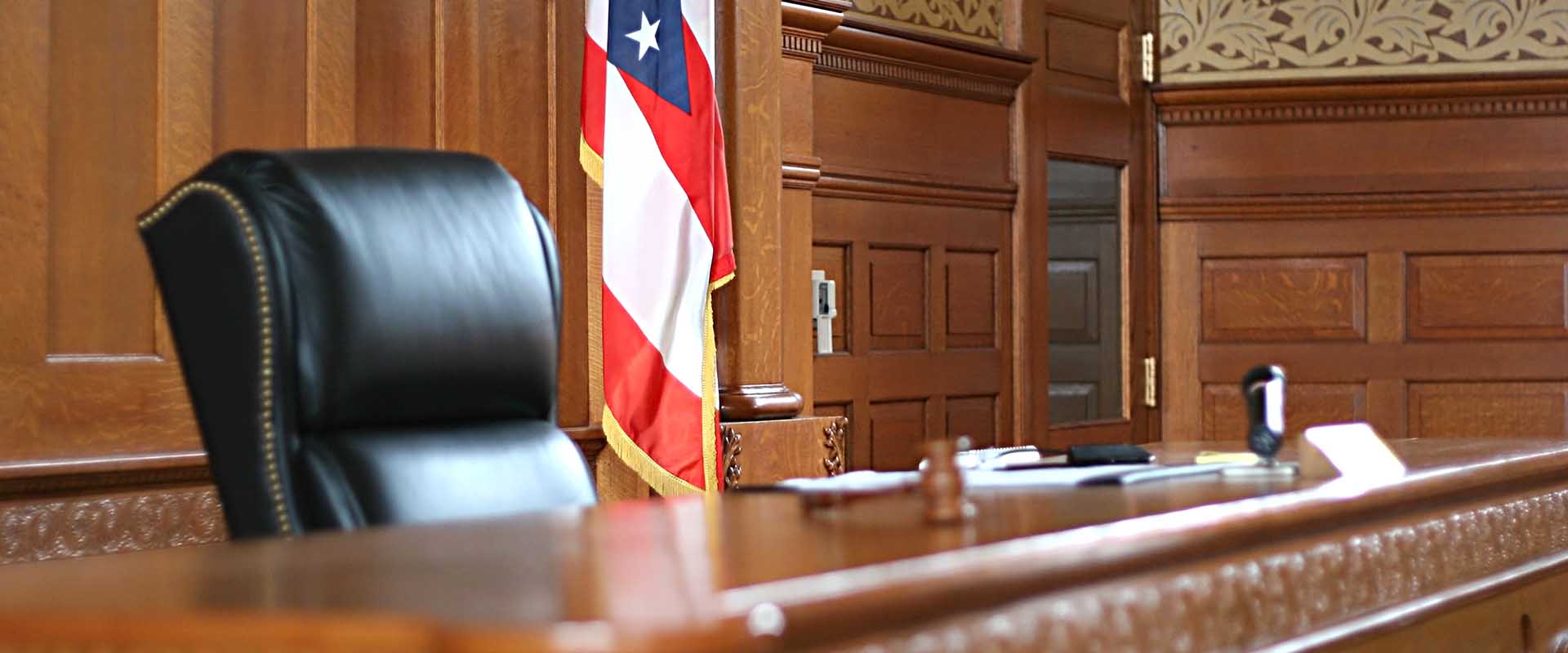Ninth Circuit Upholds District's Manifestation Determination

April 2024
Number 19
In C.D. v. Atascadero Unified School District (9th Cir. April 9, 2024, No. 23-55563) __F.3d __ [2024 WL 1526748], a panel of Ninth Circuit judges agreed with findings from the District Court and Office of Administrative Hearings (OAH) that a high school student plaintiff had failed to establish (1) that his conduct was caused by or had a direct and substantial relationship to his disability, or (2) that his conduct was a direct result of the Atascadero Unified School District’s (Atascadero) failure to implement his IEP. Lozano Smith attorneys Sarah Garcia and Karina Demirchyan successfully represented Atascadero in this matter.
The decision provides school districts with an example of a defensible manifestation determination team decision finding that a student’s conduct was not a manifestation of their disability.
Background
This case involved a high school student, C.D., who was removed from his individualized education program (IEP) placement for more than ten days after assaulting a teacher three times.
The legal issue at the center of the case arises from the federal Individuals with Disabilities in Education Act, which prohibits removing a child with disabilities from his or her current educational setting for a period of more than ten school days, unless the school first determines that the student’s behavior was not a manifestation of their disability.
Atascadero held a manifestation determination meeting, which concluded that C.D.’s conduct was not a manifestation of his disabilities. The manifestation team’s analysis made a distinction between C.D.’s typical disability-related behavior and his use of functional language during the assaults, targeting one specific individual when the opportunity presented itself.
C.D. appealed the manifestation determination to OAH. At that hearing, the administrative law judge (ALJ) held that Atascadero conducted an appropriate manifestation determination meeting and that C.D. failed to prove otherwise. In response, C.D. filed an appeal with the federal District Court, seeking review of the ALJ’s decision. The District Court upheld the ALJ’s decision on all issues.
Ninth Circuit Decision
Next, C.D. appealed to the Ninth Circuit Court of Appeals. The Ninth Circuit upheld the lower court’s decision, finding that the District Court did not err in concluding that C.D.’s conduct was not a manifestation of his disabilities. The Court emphasized that in considering manifestation determinations, the Court does not attribute all of a student’s conduct to his disabilities because doing so “would amount to asserting that all acts of a [child with disabilities], both good and bad, are fairly attributable to his [disabilities].” (Doe ex rel. Gonzales v. Maher (9th Cir. 1986) 793 F.2d 1470, 1482, aff’d as modified sub nom. Honig v. Doe (1988) 484 U.S. 305.)
The Court highlighted that while the IEP team members acknowledged that C.D.’s disabilities sometimes manifested in difficulties with focus, attention, or compliance, Atascadero team members distinguished the assaults in question, which were particularly inappropriate, violent, and targeted.
The Court further determined that Atascadero complied with all relevant procedural safeguards by (1) holding a manifestation determination meeting within ten days of suspending C.D.; (2) considering the circumstances of the events at issue, C.D.’s evaluation and diagnostic results, observations, health records, school disciplinary records, IEP, services, placement, and additional analyses from the school psychologist and principal; and (3) concluding that the conduct in question was not a manifestation of C.D.’s disabilities.
Takeaways
The Ninth Circuit’s decision provides clarity regarding the level of analysis and review an IEP team must rely on before making a manifestation determination. Manifestation determination teams must review all relevant information in the student’s file, including the student’s IEP, any teacher observations, and any relevant information provided by parents.
If you have any questions about C.D. v. Atascadero Unified School District or need guidance related to discipline decisions involving special education students, please contact the authors of this Client News Brief or any attorney at one of our eight offices located statewide. You can also subscribe to our podcasts, follow us on Facebook, Twitter and LinkedIn or download our mobile app.
Number 19
In C.D. v. Atascadero Unified School District (9th Cir. April 9, 2024, No. 23-55563) __F.3d __ [2024 WL 1526748], a panel of Ninth Circuit judges agreed with findings from the District Court and Office of Administrative Hearings (OAH) that a high school student plaintiff had failed to establish (1) that his conduct was caused by or had a direct and substantial relationship to his disability, or (2) that his conduct was a direct result of the Atascadero Unified School District’s (Atascadero) failure to implement his IEP. Lozano Smith attorneys Sarah Garcia and Karina Demirchyan successfully represented Atascadero in this matter.
The decision provides school districts with an example of a defensible manifestation determination team decision finding that a student’s conduct was not a manifestation of their disability.
Background
This case involved a high school student, C.D., who was removed from his individualized education program (IEP) placement for more than ten days after assaulting a teacher three times.
The legal issue at the center of the case arises from the federal Individuals with Disabilities in Education Act, which prohibits removing a child with disabilities from his or her current educational setting for a period of more than ten school days, unless the school first determines that the student’s behavior was not a manifestation of their disability.
Atascadero held a manifestation determination meeting, which concluded that C.D.’s conduct was not a manifestation of his disabilities. The manifestation team’s analysis made a distinction between C.D.’s typical disability-related behavior and his use of functional language during the assaults, targeting one specific individual when the opportunity presented itself.
C.D. appealed the manifestation determination to OAH. At that hearing, the administrative law judge (ALJ) held that Atascadero conducted an appropriate manifestation determination meeting and that C.D. failed to prove otherwise. In response, C.D. filed an appeal with the federal District Court, seeking review of the ALJ’s decision. The District Court upheld the ALJ’s decision on all issues.
Ninth Circuit Decision
Next, C.D. appealed to the Ninth Circuit Court of Appeals. The Ninth Circuit upheld the lower court’s decision, finding that the District Court did not err in concluding that C.D.’s conduct was not a manifestation of his disabilities. The Court emphasized that in considering manifestation determinations, the Court does not attribute all of a student’s conduct to his disabilities because doing so “would amount to asserting that all acts of a [child with disabilities], both good and bad, are fairly attributable to his [disabilities].” (Doe ex rel. Gonzales v. Maher (9th Cir. 1986) 793 F.2d 1470, 1482, aff’d as modified sub nom. Honig v. Doe (1988) 484 U.S. 305.)
The Court highlighted that while the IEP team members acknowledged that C.D.’s disabilities sometimes manifested in difficulties with focus, attention, or compliance, Atascadero team members distinguished the assaults in question, which were particularly inappropriate, violent, and targeted.
The Court further determined that Atascadero complied with all relevant procedural safeguards by (1) holding a manifestation determination meeting within ten days of suspending C.D.; (2) considering the circumstances of the events at issue, C.D.’s evaluation and diagnostic results, observations, health records, school disciplinary records, IEP, services, placement, and additional analyses from the school psychologist and principal; and (3) concluding that the conduct in question was not a manifestation of C.D.’s disabilities.
Takeaways
The Ninth Circuit’s decision provides clarity regarding the level of analysis and review an IEP team must rely on before making a manifestation determination. Manifestation determination teams must review all relevant information in the student’s file, including the student’s IEP, any teacher observations, and any relevant information provided by parents.
If you have any questions about C.D. v. Atascadero Unified School District or need guidance related to discipline decisions involving special education students, please contact the authors of this Client News Brief or any attorney at one of our eight offices located statewide. You can also subscribe to our podcasts, follow us on Facebook, Twitter and LinkedIn or download our mobile app.
As the information contained herein is necessarily general, its application to a particular set of facts and circumstances may vary. For this reason, this News Brief does not constitute legal advice. We recommend that you consult with your counsel prior to acting on the information contained herein.





